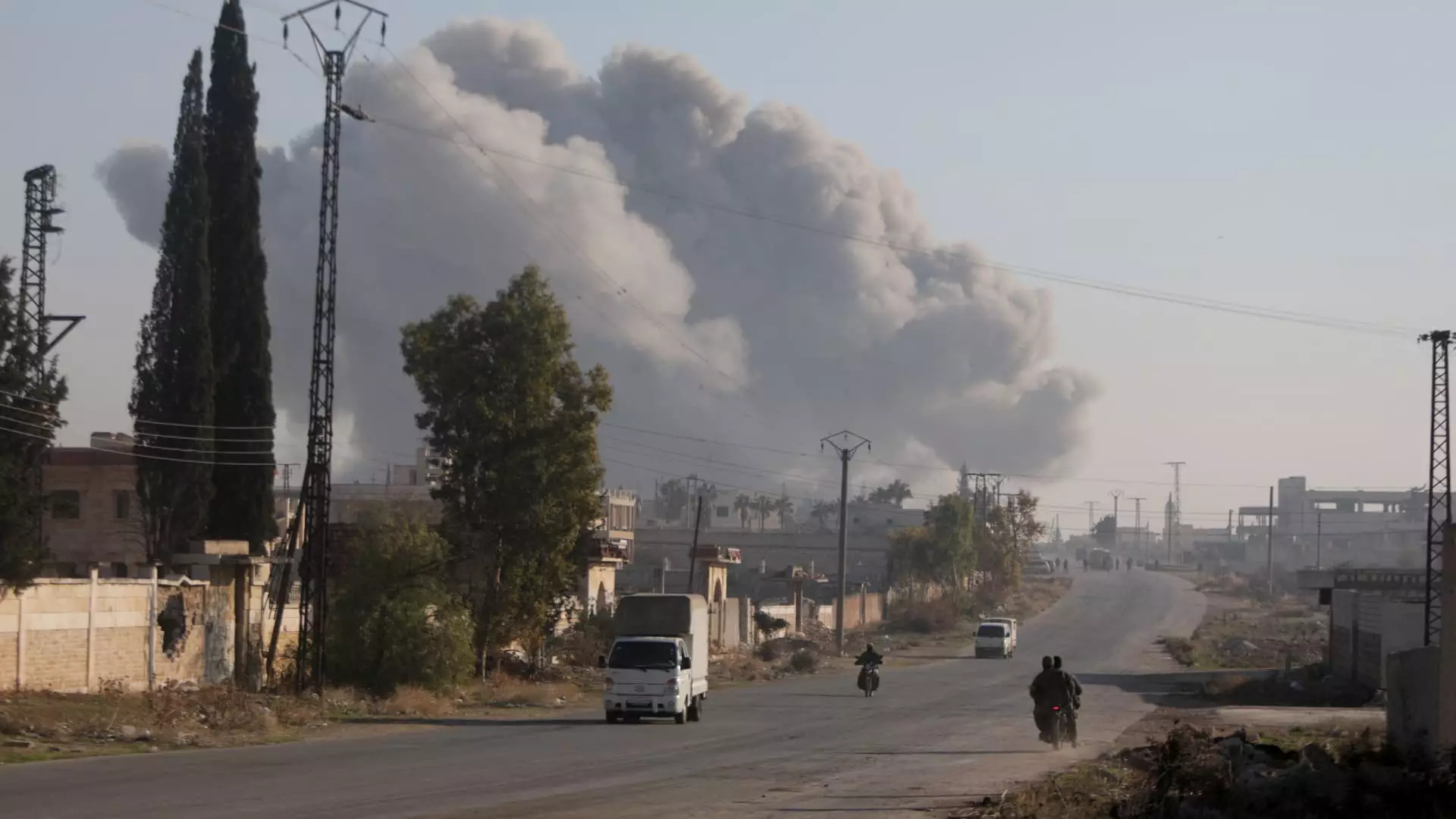In a shocking development that has reverberated throughout the Middle East, insurgent forces have reinitiated combat operations in Aleppo, Syria’s largest city, marking the first significant clashes with government troops since 2016. This escalation has not only unsettled the residents of Aleppo, sending many fleeing their homes, but it has also raised alarming questions about the stability of the region amid ongoing conflicts in Gaza and Lebanon. The sudden resurgence of fighting signifies a potential shift in the dynamics of the Syrian civil war, a complex conflict that has been ongoing since 2011.
The offensive launched by insurgents on Aleppo occurred on Friday, following an earlier assault on Wednesday that saw thousands of fighters sweeping across neighboring villages. Eyewitnesses reported chaos as missiles and gunfire echoed in the city, with residents escaping to safer areas. The Syrian Observatory for Human Rights, a war monitor organization, reported heavy casualties on both sides, confirming that the fighting had intensified considerably in recent days. This recent round of violence comes at a particularly sensitive time, coinciding with heightened tensions in Israel and Lebanon, which have strained the regional security landscape.
Aleppo had remained relatively quiet since government forces reclaimed control of the city’s eastern neighborhoods in 2016, a campaign that was heavily supported by Russian and Iranian military forces. However, recent reports indicate a collapse in the defensive capabilities of Syrian government troops, with some analysts suggesting that these forces appear “extremely weak.” Robert Ford, the last U.S. ambassador to Syria, remarked that the government’s inability to counter the insurgent advance reflects a significant decline in their military strength. The recent offensive led primarily by the Hayat Tahrir al-Sham (HTS) represents one of the most formidable challenges to Syrian government control in several years.
This uptick in hostilities unravels amid Iran and Hezbollah’s preoccupation with their own challenges, particularly the ongoing conflict with Israel. With Iranian-backed factions diverted from operations in Syria, the insurgents capitalized on this opportunity to launch their offensive. Analysts have pointed out that the current political and military distractions affecting Iran and its allies have emboldened Syrian opposition forces. Dareen Khalifa, an expert from the International Crisis Group, emphasized that the quick collapse of Syrian government defenses took many observers by surprise, suggesting a dire and precarious situation for the Assad regime.
Turkey, a key player in the Syrian civil war, has historically supported opposition groups fighting against the Assad regime. Despite this backing, Turkey’s attempts to mediate and ensure a ceasefire in the face of Syrian government advances have proven largely ineffective. The Turkish government reported that the insurgents initially aimed for a “limited” offensive, which escalated as the government forces began their withdrawal. A significant goal of the insurgents involves reestablishing boundaries within a long-standing de-escalation zone—territory that has seen fluctuating control over the years.
The 2016 battle for Aleppo marked a significant turning point in the Syrian civil war, with government forces gaining considerable territory after a prolonged siege. The events of recent days highlight not only the volatility of the situation in Aleppo but also underscore the fragility of any semblance of stability in the region. As hostilities grow and external actors remain deeply involved, the narrative of control and resistance continues to evolve.
In response to the insurgent activities, Syrian government officials have claimed that they are actively combating the attacks and have reported destruction of insurgent drones and equipment. However, the effectiveness and resilience of government troops in this latest round of conflict could be called into question, especially as the insurgents reportedly claim control over significant portions of Aleppo. The situation remains fluid, with daily developments and claims from each side bringing further unpredictability to an already chaotic war-torn landscape.
As Syria’s civil war enters yet another complicated chapter, the resurgence of violence in Aleppo serves as a grim reminder of the underlying tensions that have persisted in the region for over a decade. The implications of these developments stretch far beyond Syria, affecting regional stability and international relations. The world watches closely as the balance of power continues to shift amidst the enduring chaos, revealing complexities that challenge any prospect of resolution in the near future.


Leave a Reply